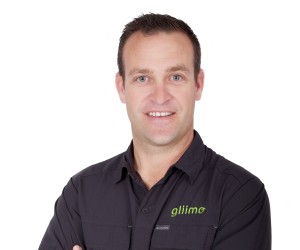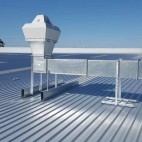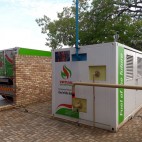Each house or residence is different in terms of load requirements and in general there is a lack of knowledge in South Africa regarding solar technology, writes solar expert Tommy Davies
I often see that people are making the mistake of not comparing ‘apples with apples’ and are misinformed about the terms of Grid-Tie and Off-Grid PV systems as there is a huge difference. Grid-Tie systems are basically an ‘electricity supplement’, i.e. power is generated and converted into AC via PV panels and then connected in parallel with the national grid supplier.
The generated power from the inverter will supply the load, but in the event of load shedding, this inverter will also switch off, therefore the term ‘electricity supplement’. In short, you will save energy only when there is active sun and grid.
Off-Grid system is a term used in the market, but misinterpreted by suppliers. We often see that Residential Solar Suppliers (RSS) supply clients with pricing and the next supplier would be completely ‘out of budget’. This is mostly due to RSS not understanding the clients requirements, or even over- and/or under-designing the Off-Grid/Backup required load and not comparing; apples with apples;.
We normally overcome this by installing a load analyser that will capture the required off-grid/backup requirements and at the same time record maximum, minimum and base load requirements.
Cost reductions
We have seen a decrease in PV pricing which is mainly due to the high demand worldwide in the last view years of between 30-60%. Battery technology is improving, Tesla has recently launched the ‘Powerwall’ battery and for the first time it is now possible to justify any ‘off-grid’ applications for 5-10kWh at less than $3 500.
The key to any investment in solar is to buy quality from the start. The RSS will likely make the sale with statements of a ‘25-year-warranty, etc.’ and a life expectancy of 20 years. Clients must be very careful as there are many RSS with very ‘poor’ solar suppliers and/or offerings. They run the risk of investing in this technology and after several years sitting with a system that is not working. A good example here is the solar thermal geyser. The old saying goes with this technology – goedkoop is duurkoop.
To minimise costs, make sure that the necessary infrastructure, i.e. conduits and/or wire ways, are installed from a building phase, and install the main DB board in a location where it is easily accessible and minimises any loss in voltage on lengthy cable runs from the PV panels and AC cables. A good point to start is that RSS should assist architects with design and implementations.
Incentives or lack thereof from government and Eskom to go solar
To understand this correctly we need to understand what happens with energy that is generated and not used. It is proven that families consume more energy in the evening, mid morning and late afternoon than at mid-day. A PV system is the most efficient at 12h00 (midday) and generates the most energy. This generated energy at that time is mostly wasted as the inverter ‘throttles down’ and generation of energy is only as per the required load. Should there be a battery bank, the ‘additional wasted energy’ will be stored for backup or evening use.
Currently there are a few municipalities, especially in the Cape, that will incentivise or approve the ‘wasted energy’ to be fed back into the grid, hence the term feed-in-tariffs or F.I.T. This will allow the client to receive some sort of credit or incentive for energy that is not being used by the owner of the PV system, and can benefit to reduce their Eskom bill at the end of the month.
Eskom and RSS should work together to approve and implement F.I.T, as we would see a reduction in demand on the national grid. Eskom can then focus on industrial growth and making sure our economy grows, ensuring a better future for all of us.
Behind our potential
Africa (South) is rated under the top highest irradiation areas in the world. South Africa has almost double the sun hours that Germany has, and still we are behind with the implementation of solar.
People have to embrace this technology and start making this world a greener environment ensuring that the next generation will have the same quality of life we have and not have to walk around with masks due to un-breathable air with high CO2 emissions.
Once this barrier is overcome we would see the demand for RSS rising. Our country has been known to deliver very successful entrepreneurs – Elon Musk to name one – and I am sure that we will see many more when this bubble bursts. The biggest challenge will then be to ensure quality, and know how will be delivered.
We have taken two years to test, install, commission and learn the requirements of our client before selling our first system. I think that any person who would want to get involved in this field must understand the technology and have a passion for it – as this is a ‘life changer’ for many people out there and has a direct impact on lifestyle.
As this industry grows, and our experience increases, we will see the ‘big players’ investing in SA and the poor quality suppliers disappearing. This will mean that we will see local production and manufacturing plants being built, therefore meeting the demand.
New opportunities for installers and suppliers
We will have various market leaders in the different business segments, i.e. industrial, commercial, residential and agricultural. To be a specialist or specific market leader we will see some interesting developments and changes in the various markets, and could see companies dominating specific areas. Currently new houses must have a 50% ‘green factor’, i.e. insulated walls, double-glazed windows, etc. Why not solar?
The government must motivate and enforce the industry leaders to adopt this technology from the building phase. Eskom need to approve F.I.T and this will happen by itself – who would not go for this technology if you receive an incentive or be are in control of your own energy supply?”
Tommy Davies










